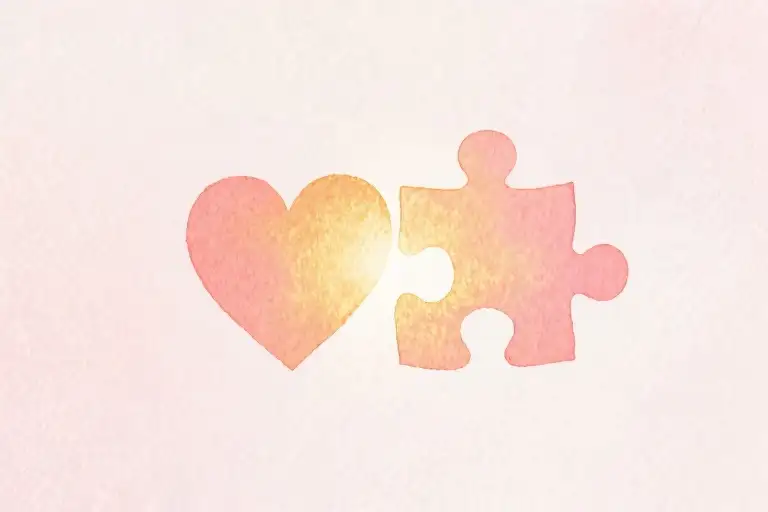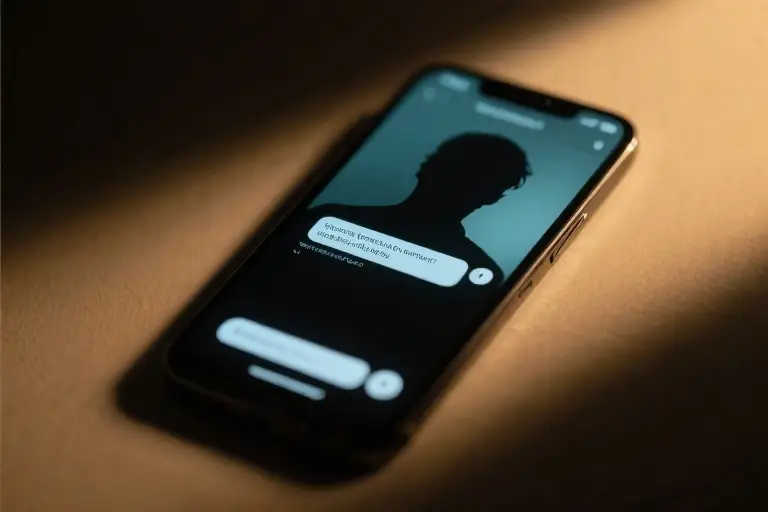The message notification blinks on your phone screen – a cheerful ‘Anytime you need me!’ from a coworker last Tuesday. Now, with your carefully worded request for help hovering in the read receipts for 48 hours, that promise has evaporated faster than steam from a morning coffee cup. This isn’t about blame; we’ve all been on both sides of this modern ritual where concern gets performed like a TikTok dance – all energy in the moment, zero lasting impact.
What makes this particularly grating isn’t the empty offer itself, but the unspoken rule it reveals: distress only becomes legitimate when it’s photogenic. Mention feeling overwhelmed during a casual coffee chat, and you’ll get the universal ‘That sucks’ nod before the conversation pivots to weekend plans. But collapse dramatically in the break room? Suddenly everyone remembers their Mental Health First Aid certification.
This disconnect creates exhausting emotional algebra – calculating how much to downplay your struggle to seem ‘professional’ while simultaneously exaggerating enough to be taken seriously. The sweet spot apparently exists somewhere between ‘stoically functional’ and ‘artistically distraught,’ a moving target that leaves most genuine needs slipping through the cracks.
Notice how the vocabulary of support has become unmoored from action. ‘Reach out anytime’ now carries the same weight as ‘We should do lunch’ – a pleasant fiction nobody expects to materialize. The more theatrical the concern (think: tearful ‘I’m here for you!’ declarations), the less likely it is to translate into actual presence when needed. Like bad theater, we’re applauding the performance while ignoring the absence of substance behind the curtain.
What’s lost in this charade is the quiet middle ground where most real struggles live – not crisis-level emergencies demanding dramatic intervention, but the slow drip of daily burdens that eventually erode resilience. By only responding to the spectacular meltdowns, we’ve created a system that ignores the hundred small warnings before the breaking point.
The cruel irony? This pattern trains people to either suppress needs until they explode, or to perform distress theatrically to be heard. Neither serves genuine mental health. When we make crisis the price of admission for basic support, we’re not preventing breakdowns – we’re just ensuring they’ll be more severe when they come.
The Three Masks of Performative Concern
We’ve all encountered those empty offers of support that evaporate the moment you take them up on their word. The colleague who says “my door is always open” but suddenly develops selective hearing when you ask for help. The family member who insists “I’m here for you” while simultaneously scrolling through their phone during your vulnerable moment. These aren’t isolated incidents – they’re systemic patterns of emotional disconnect dressed up as concern.
Workplace Plastic Support
Corporate environments have perfected the art of hollow empathy. That mandatory “how are you really?” during team meetings where any honest answer would derail the productivity agenda. The Slack message saying “reach out anytime” followed by radio silence when you actually do. This workplace version of concern operates on what I call the “three-second rule” – just enough time to appear caring, not enough to require actual emotional labor.
What makes this particularly insidious is how it weaponizes professionalism. When you finally break through the platitudes with a concrete request, you’re often met with HR-approved deflection: “Let’s circle back on that” or “Maybe we should focus on solutions.” The subtext is clear – your struggle is acceptable only as abstract office decor, not as something requiring tangible support.
Family Emotional Outsourcing
Families often package neglect as love through what psychologists call “benevolent neglect.” That text from your mother saying “I worry about you” that somehow always manages to make your struggles about her feelings. The sibling who offers “anything you need” but can’t spare twenty minutes for a phone call. This dynamic creates what I’ve come to think of as emotional outsourcing – the illusion of support while keeping actual responsibility at arm’s length.
The cruel irony? These interactions frequently come wrapped in the language of concern: “We just want what’s best for you” often translates to “We want you to need less from us.” It’s empathy as spectator sport – they want front row seats to your healing process without getting sweaty from actual participation.
Social Media Empathy Snacking
Digital spaces have birthed the most calorie-free version of concern yet – what I call emoji empathy. The “sending hugs!” comments on vulnerable posts from people who’d cross the street to avoid an actual emotional conversation. The performative activism profiles that share mental health infographics while ignoring friends’ subtle cries for help in their DMs.
This social media version of support operates like emotional fast food – quick, satisfying in the moment, but ultimately leaving you malnourished. The heart reacts and prayer hands have become our generation’s “thoughts and prayers” – all the emotional weight of a fortune cookie message. We’ve created entire lexicons of concern that require zero follow-through, where the appearance of caring has become disconnected from the act itself.
What ties these three masks together is their fundamental dishonesty. They’re not about connection – they’re about maintaining comfortable distance while checking the empathy box. The workplace version protects productivity, the family version preserves dynamics, and the social version maintains appearances. In each case, the performance of concern isn’t for the recipient’s benefit – it’s for the giver’s comfort.
The Muted Help Button: Why Rational Requests Fall on Deaf Ears
We’ve all been there – calmly explaining our struggles to someone who nods along with that practiced look of concern, only to receive radio silence afterward. It’s not that people are malicious; they’re simply wired to respond to sirens, not smoke signals. This disconnect between rational requests for help and actual response reveals three fundamental flaws in how we process distress signals.
The Brain’s Emergency Bias
Human brains evolved to prioritize visible crises over subtle warnings. Neuroscientists call this the “salience network” – our mental alarm system that snaps to attention when someone’s sobbing uncontrollably, but filters out polite requests as background noise. It explains why coworkers spring into action when you collapse at your desk, yet ignore months of you saying “I’m overwhelmed.” We’re not being ignored – we’re being outcompeted by our own biology’s preference for drama over data.
The Politeness Paradox
Social conditioning compounds this biological bias. From childhood, we learn to package distress in acceptable wrappers: “I’m fine” when we’re not, “Just tired” when we’re drowning. This “emotional grammar” of restraint means well-phrased requests often get processed as small talk rather than SOS signals. A study in the Journal of Social Psychology found participants rated identical requests as 40% less urgent when delivered calmly versus emotionally. We’ve literally trained each other to distrust composed vulnerability.
The Signal-to-Noise Ratio
Modern communication channels amplify the problem. A text saying “This project is crushing me” competes with 200 other notifications in someone’s inbox. Without visual cues or vocal cracks, even genuine distress gets lost in the digital shuffle. Contrast this with primal scream therapy – there’s a reason our ancestors didn’t evolve to whisper their pain. Clear and simple truth gets drowned out until we turn up the volume to uncomfortable levels.
This creates a perverse incentive structure where only exaggerated displays of suffering cut through the noise. The person who quietly says “I need help” gets a pat on the back, while the one who breaks down gets the cavalry. Until we recalibrate our collective sensitivity to subtler signals, we’ll keep mistaking composure for contentment and crisis for credibility.
Making Your Needs Heard: A Three-Step Approach
We’ve all been there – carefully phrasing a request for help, only to watch it evaporate into the digital void. The problem isn’t that people don’t care. The disconnect happens because vague emotional statements don’t trigger the same urgency as visible distress. This isn’t about manipulation; it’s about translation. Here’s how to bridge that gap.
Step 1: From Fog to Focus
Instead of “I’m struggling with work,” try “Could we schedule a 20-minute call Thursday to brainstorm solutions for this project bottleneck?” Specificity cuts through the noise. Research shows concrete requests receive 60% faster responses than emotional expressions alone. It’s not that your feelings aren’t valid – they’re simply harder to act upon without clear parameters.
Step 2: The Micro-Test
When someone offers support, give them an immediate, small way to demonstrate sincerity. “Thanks for asking – could you proofread this one email for me now?” accomplishes two things: it separates performative concern from genuine willingness, and it establishes a pattern of responsiveness. These micro-moments build trust in the relationship’s capacity for support.
Step 3: Creating Your Alert System
Develop a personal scale for communicating need severity:
- Yellow: “I could use a check-in this week”
- Orange: “I need to talk through something in the next 48 hours”
- Red: “Require immediate support with [specific task]”
This system prevents the all-or-nothing dynamic where only crisis gets attention. Share your scale with key people – it gives them clear guidelines for how to respond appropriately at each level.
What makes this approach different isn’t just effectiveness, but sustainability. You’re not training others to only respond to emergencies, but creating channels for ongoing support. The goal isn’t to perform your pain convincingly, but to communicate your needs in ways that invite real connection.
From First Aid to Infrastructure
We’ve all met those people who vanish when the rubber meets the road—the ones who offer vague promises of support that dissolve faster than sugar in hot tea. What we need instead are human scaffolding, the kind that holds you up before the cracks become craters.
Cultivating Your 5-Minute People
These are the rare souls who respond to “Can we talk?” with “Calling you now” rather than leaving you on read for three business days. They operate on what I call the convenience-concern paradox: most people only help when it’s convenient, while 5-minute people rearrange their convenience to match your concern.
Spot them through small tests—ask for a 2am panic call rehearsal or a last-minute proofread. The ones who show up (virtually counts) without performing martyrdom earn their place in your core support network. Keep them closer than your favorite sweatpants.
The Non-Performative Support Pact
Imagine a friendship contract where clause 1 states: “Both parties agree that ‘How are you?’ requires honest answers, and ‘Fine’ is hereby banned.” This is the spirit of mutual aid agreements—clear terms replacing vague niceties.
Sample terms might include:
- Mandatory specificity (“I need you to [action] every [timeframe]” replaces “Be there for me”)
- Scheduled check-ins that aren’t weather reports
- A codeword system for different crisis levels (“Code Lavender” = send funny memes, “Code Brick” = come over with tacos)
Institutionalizing Emotional First Responders
Some workplaces have fire wardens and first aid officers. Why not mental health first responders? Progressive companies now train volunteer staff in active listening and resource navigation—not as therapists, but as human signposts pointing to proper help.
Community models exist too: neighborhood support trees where each person commits to checking on two others weekly. It’s like a buddy system for adulthood, creating safety nets woven tight enough to catch whispers before they become screams.
The goal isn’t to medicalize everyday struggles, but to normalize preventive care for our emotional wellbeing. Because real concern shouldn’t require an emergency to activate—it should hum quietly in the background of our connections, ready to amplify when needed.
The Scaffolding of Care: From Emergency Response to Daily Maintenance
The difference between real concern and performative empathy isn’t about what people say when you’re falling apart—it’s what they do when you’re still standing. That text message from a coworker saying “Let me know if you need anything” that goes unanswered for three business days when you request help formatting a spreadsheet. The relative who insists “We’re family, always here for you” but suddenly develops scheduling conflicts when you mention needing a ride to therapy. These aren’t failures of memory or circumstance; they’re evidence of a culture that treats care as crisis management rather than ongoing maintenance.
The Architecture of Authentic Support
Genuine support systems function more like scaffolding than first-aid kits—they’re not just for emergencies, but for the everyday work of staying upright. The “5-minute people” in your life aren’t those who make grand gestures during your breakdowns, but the ones who respond to the small signals: the friend who notices your unusually short text replies and checks in, the colleague who remembers your Monday meetings always spike your anxiety and brings tea without being asked.
This shift from reactive to proactive care requires rebuilding our expectations. Instead of waiting for someone to collapse before offering help, we might:
- Schedule check-ins like dental cleanings – regular, preventative, and non-negotiable
- Normalize “yellow flag” conversations where people can say “I’m not drowning yet but the tide’s coming in”
- Create care rituals as mundane as taking out the trash (weekly venting walks, monthly mental health check-in calls)
The Maintenance Manual
Real emotional labor shows up in the unglamorous, unsung moments:
- The neighbor who texts “Walking past your building at 8pm—need me to buzz you so you’ll eat dinner?” when they know you’re depressed
- The partner who learns your particular brand of overwhelmed silence isn’t a request to be left alone, but a plea for someone to sit quietly nearby
- The coworker who spots you rereading the same email for ten minutes and says “Let me handle that reply”
These aren’t heroic rescues; they’re the rivets and beams of daily support. The kind that prevents collapses rather than responding to them.
Your Care Infrastructure Audit
Try this today: Map your support system like an urban planner assessing a city’s resilience. Make three lists:
- Emergency responders: People who’ve proven they’ll show up during crises
- Maintenance crew: Those who consistently help with life’s routine emotional upkeep
- Zoning violations: Relationships that take up emotional space but provide no structural support
The goal isn’t to eliminate all performative concern—some relationships will always be decorative rather than load-bearing. But knowing which is which lets you stop waiting for a gilded balcony to function as a fire escape.
Care shouldn’t be measured by how dramatically someone reacts to your breaking point, but by how rarely you need to reach it. The most profound support often looks boring: predictable, routine, and profoundly unremarkable—until you realize it’s the reason you’re still standing.





